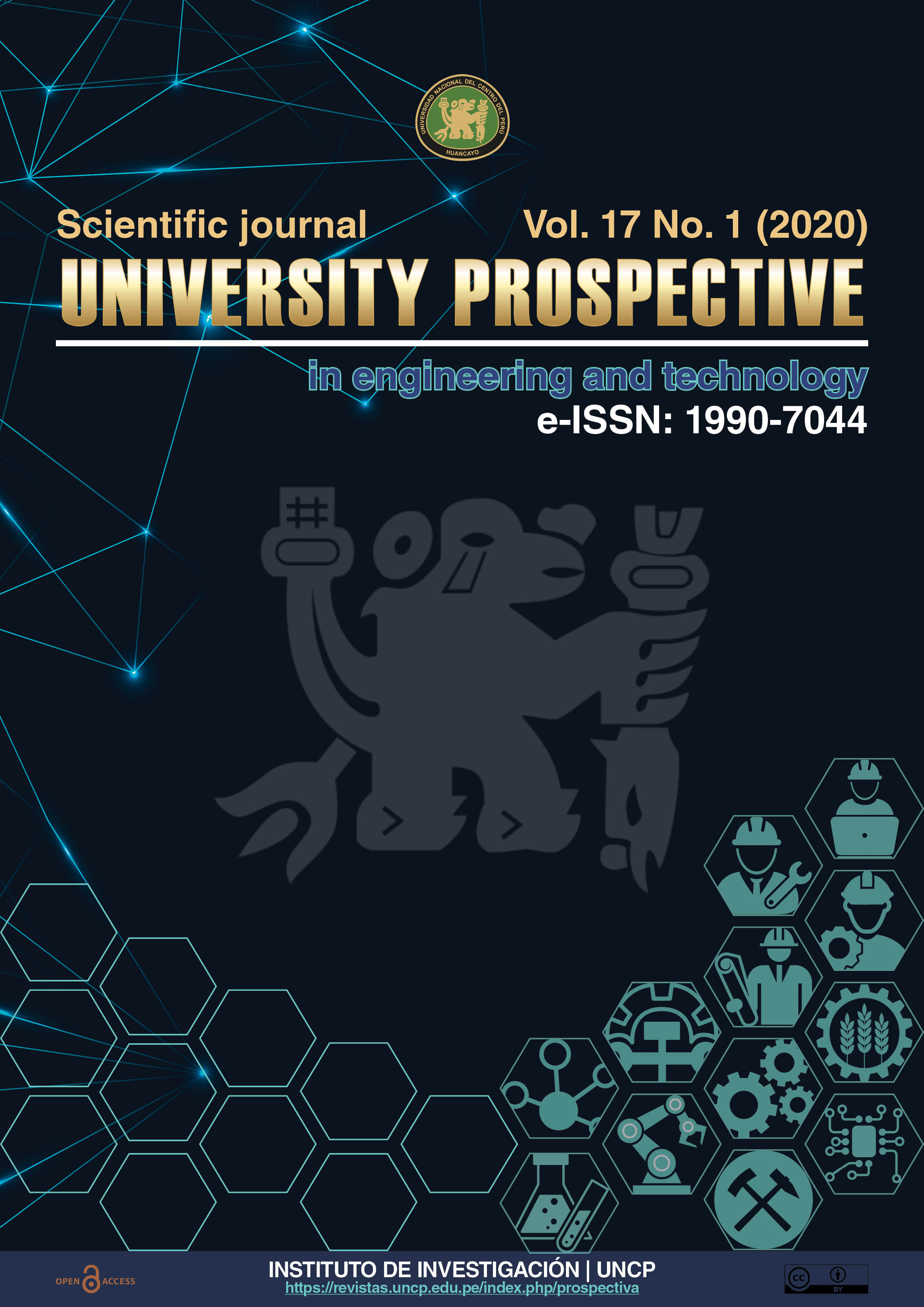Hydrothermal carbonization of gray wáter to obtain free germ biocarbón
DOI:
https://doi.org/10.26490/uncp.prospectivauniversitaria.2020.17.1382Keywords:
Hydrothermal carbonization, Gray water, Biocarbon, Degraded soils, GermsAbstract
The result of the carbonization process of organic waste is applicable in the conversion of a wide variety of biomass wastes to transform into coal and others. Wet carbonization known as hydrothermal carbonization is usable for all agricultural wastes and now in family kitchen waste and most importantly aspect is it has an influence on the quality of the coal produced. The aim of the research was to produce free germ biocarbon from grey water, which should be used in agriculture for the recovery of degraded soils. Using the combination design methodology, the configuration of the prototype carbonization reactor was obtained, which integrates a continuous process for obtaining coal, in other words, humid biomass enters and ground biocarbon delivers.
The biocarbon process was carried out in the renewable energy laboratories of mechanical engineering faculty following a 23 factorial design as shown in table No. 5. The coal samples obtained by means of 23 factorial design were analysed in the laboratory of chemical engineering faculty of the UNCP. The ADC combination delivers a free- bacteria carbón 0.99% quality by using the photo light analysis method. By comparing the theoretical background and applicability, it is concluded that the ADC combination is a favourable result in coal production and subsequent application in soil recovery since coal has a favourable quality.
Downloads
References
Cheng, F., Bayat, H., Jena, U. & Brewer, C. E. (2020). Journal of analytical and applied pyrolysis ımpact of feedstock composition on pyrolysis of low-cost protein-and lignin-rich biomass: A review. Journal of Analytical and Applied Pyrolysis, 147(August 2019), 104780. https://doi.org/10.1016/j.jaap.2020.104780
Elkhalifa, S., Al-ansari, T., Mackey, H. R. & Mckay, G. (2019). Resources, conservation & recycling food waste to biochars through pyrolysis: A review. Resources, Conservation & Recycling, 144(September 2018), 310–320. https://doi.org/10.1016/j.resconrec.2019.01.024
Felix, Larry, G. (2014). Bureau, International.
Fiori, L., Basso, D., Castello, D. & Baratieri, M. (2014). Hydrothermal Carbonization of Biomass: Design of a batch reactor and preliminary experimental results. Iconbm: International Conference on Biomass, Pts 1 and 2, 37, 55-+. https://doi.org/10.3303/CET1437010
G. Pahl, W. Beitz, J. F. & K. H. G. (2007). Engineering design: a systematic approach. Springer-Verlag London Limited (3rd editio).
García, J. G., López, N. C. & Calvo, J. Z. (2011). Estadístıca básıca para estudıantes de cıencıas.
Gutiérrez Pulido, H. & De La Vara Salazar, R. (2012). Analisis y diseño de experimentos.
Hernández Sampiere, R. (2010). Metodología de la investigación.
Libra, J., Ro, K. S., Kammann, C. & Funke, A. (2011). Hydrothermal carbonization of biomass residuals: a comparative review of the chemistry, processes and applications of wet and dry pyrolysis. (May 2014). https://doi.org/10.4155/bfs.10.81
Lu, J., Chang, Y., Poon, C. & Lee, D. (2020). Bioresource Technology Slow pyrolysis of municipal solid waste ( MSW ): A review. Bioresource Technology, 312(May), 123615. https://doi.org/10.1016/j.biortech.2020.123615
Novak, J., Lima, I., Xing, B., Gaskin, J., Steiner, C., Das, K., Busscher, W. (2009). Characterization of designer biochar produced at different temperatures and their effects on a loamy sand. Annals of Environmental Science, 3(1), 195–206.
Ottmar Edenhofer & Ramón Pichs-Madruga, Y. S. (2011). Fuentes de energía renovables e informe especial sobre fuentes de energía renovables y mitigación del cambio climático.
Downloads
Published
Issue
Section
License
Copyright (c) 2020 Lazo Baltazar, Brecio Daniel

This work is licensed under a Creative Commons Attribution-NonCommercial-ShareAlike 4.0 International License.
Esta Revista es de acceso abierto a su contenido a través del Internet, poniendo a disposición de la comunidad científica los resultados de la investigación, de manera gratuita, para el intercambio del conocimiento desarrollado.
El contenidos de la Revista se distribuyen bajo la licencia Creative Commons Reconocimiento-NoComercial-CompartirIgual 4.0 Internacional.
![IconJournalPU [ENG] by Edgar Julian-Laime®](https://revistas.uncp.edu.pe/public/journals/1/pageHeaderLogoImage_en.png)









